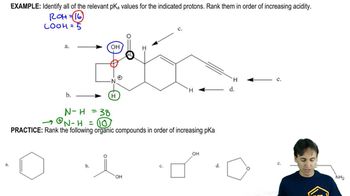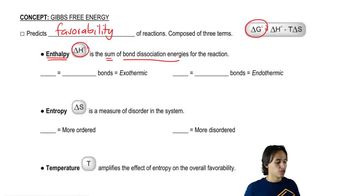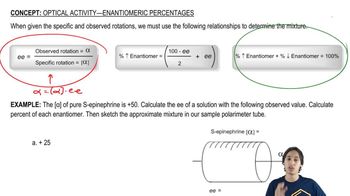For each of the following compounds, draw the form that predominates at pH = 3, pH = 6, pH = 10, and pH = 14:
b. CH3CH2N+H3 (pKa = 11.0)
 Verified step by step guidance
Verified step by step guidance Verified video answer for a similar problem:
Verified video answer for a similar problem:



 1:46m
1:46mMaster Why we use pKa instead of pH. with a bite sized video explanation from Johnny
Start learning